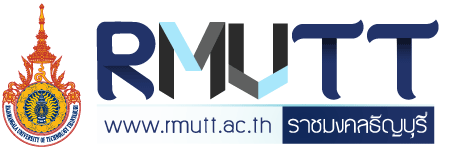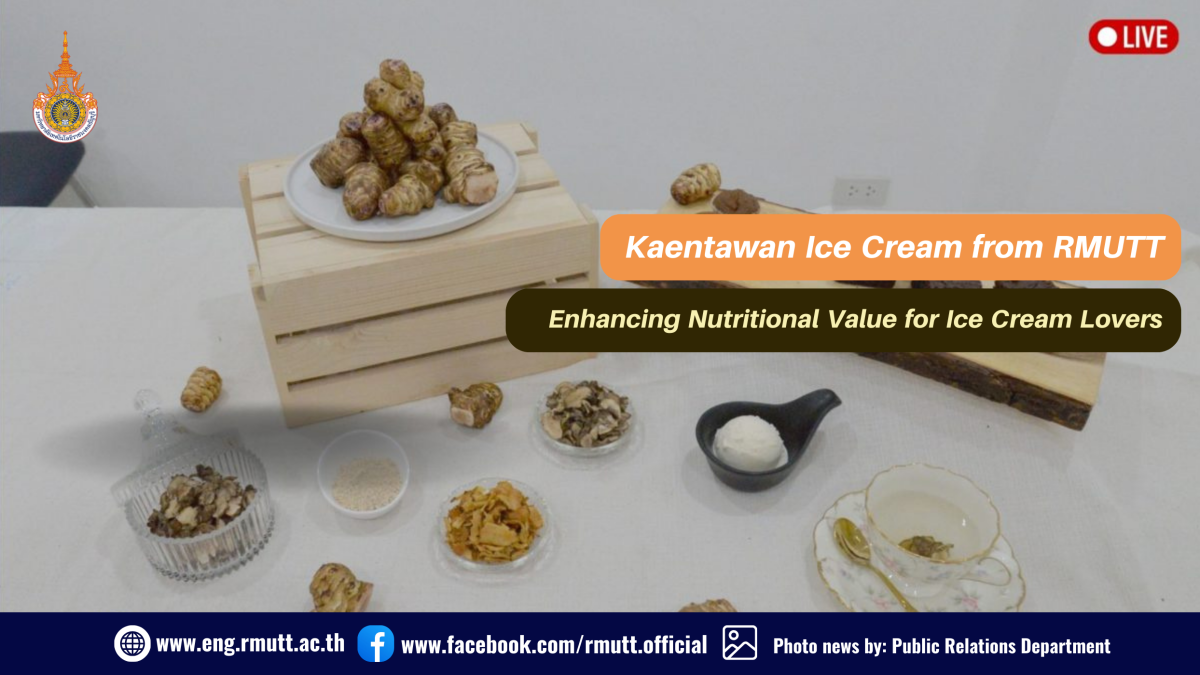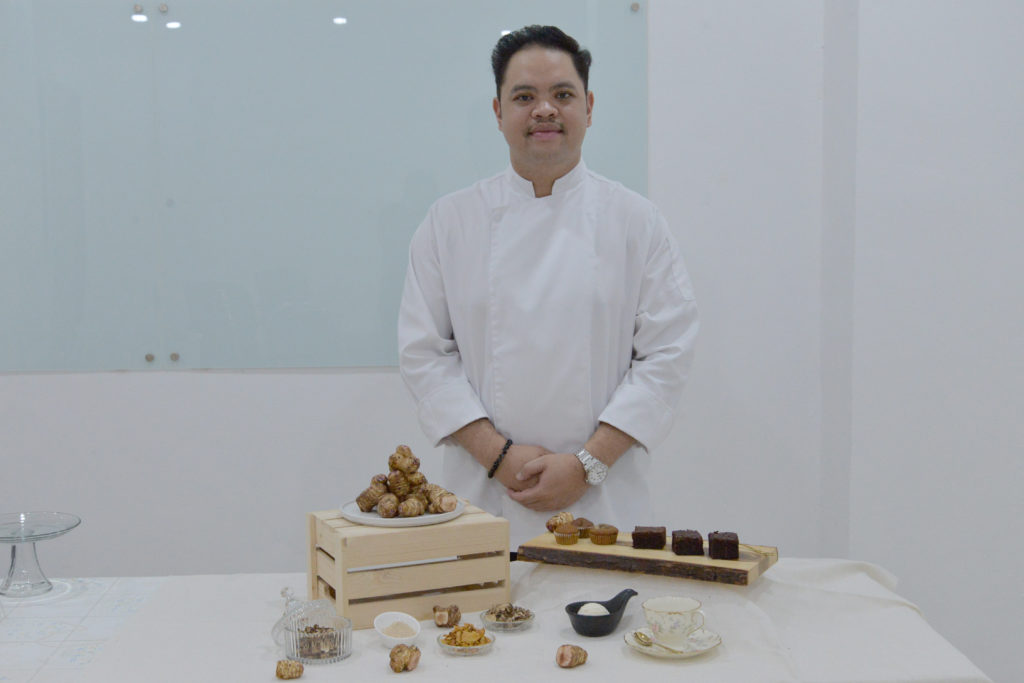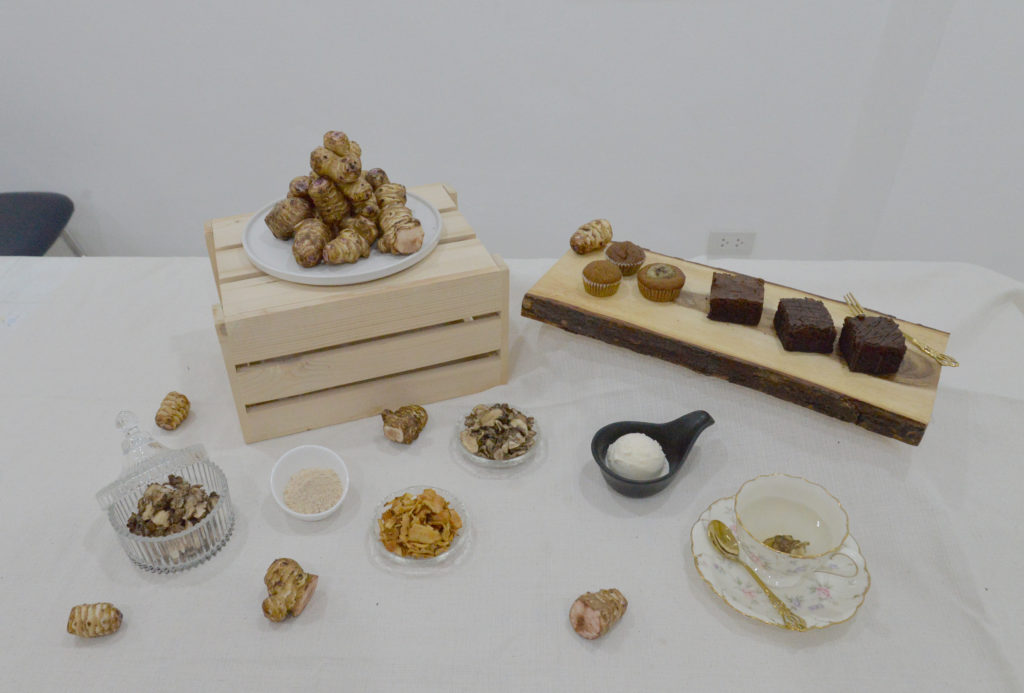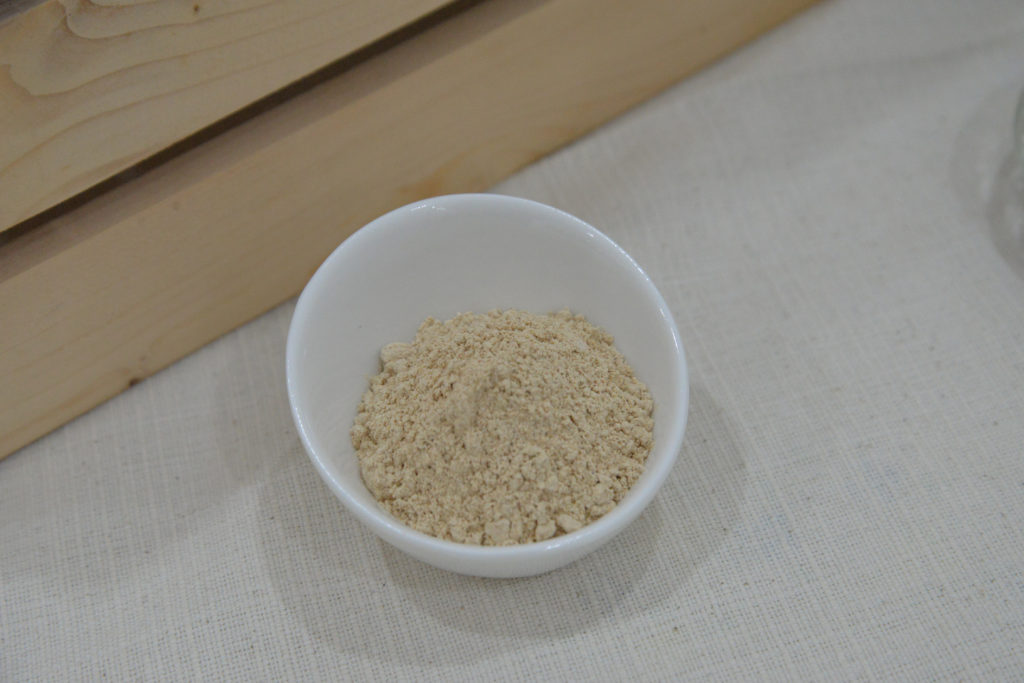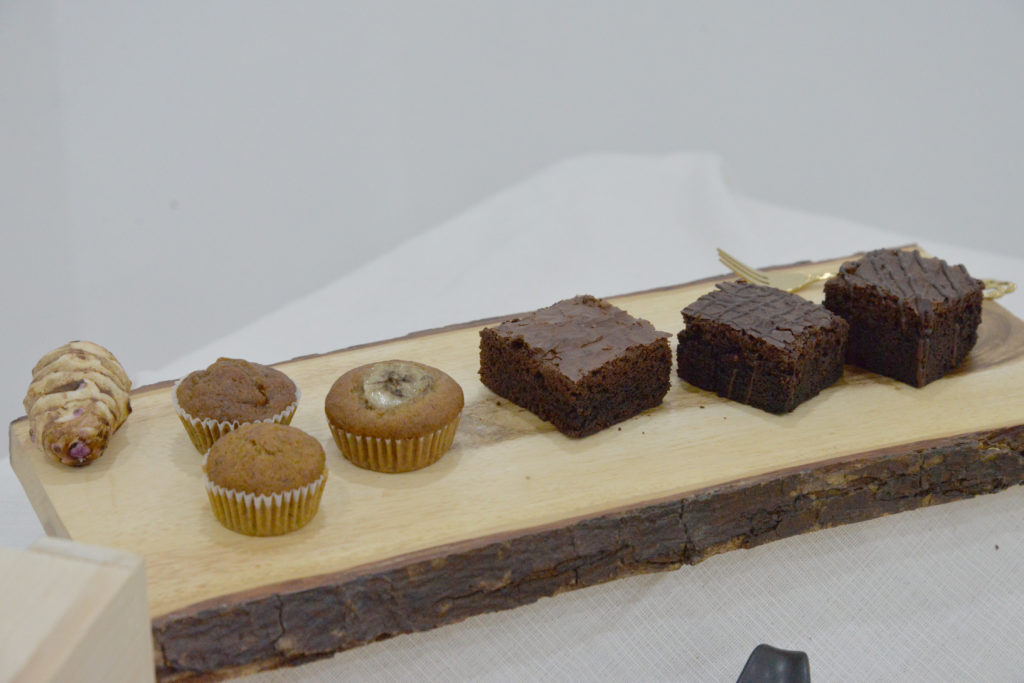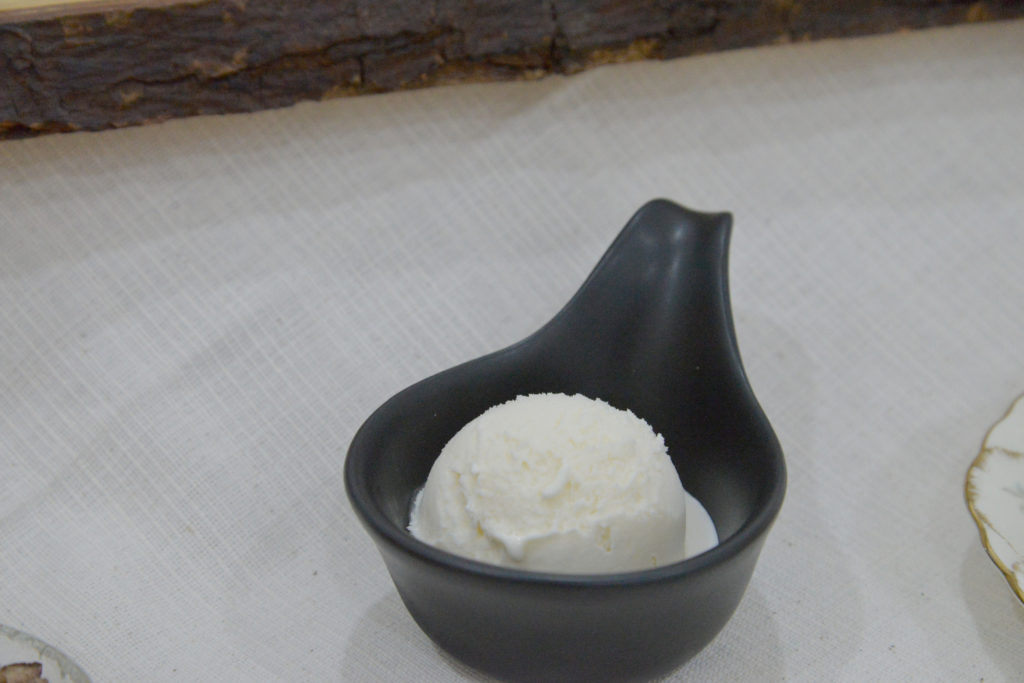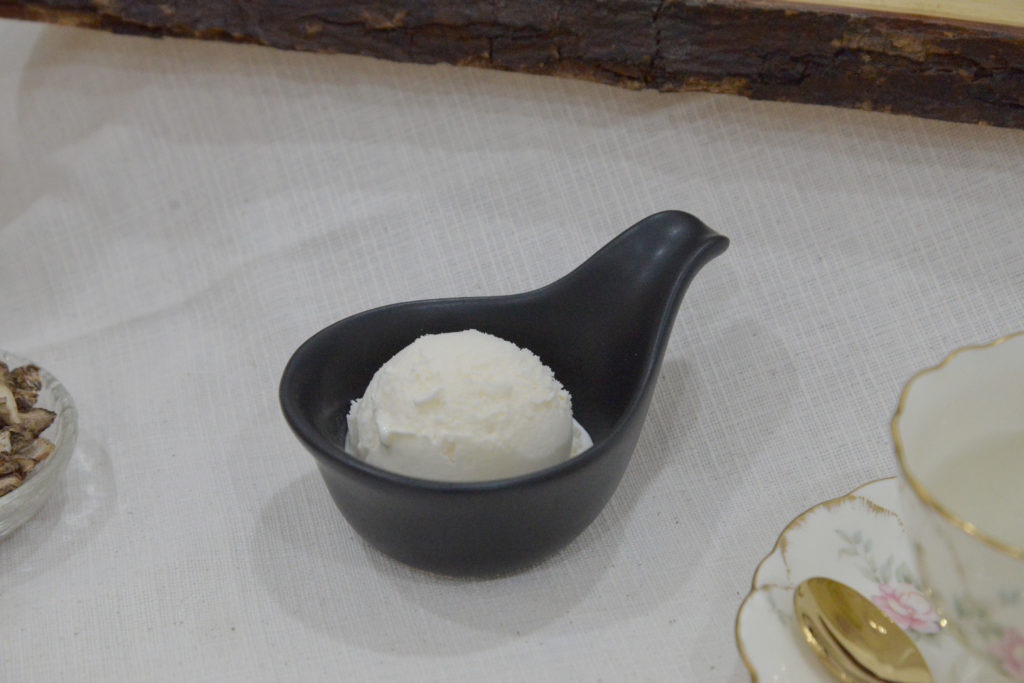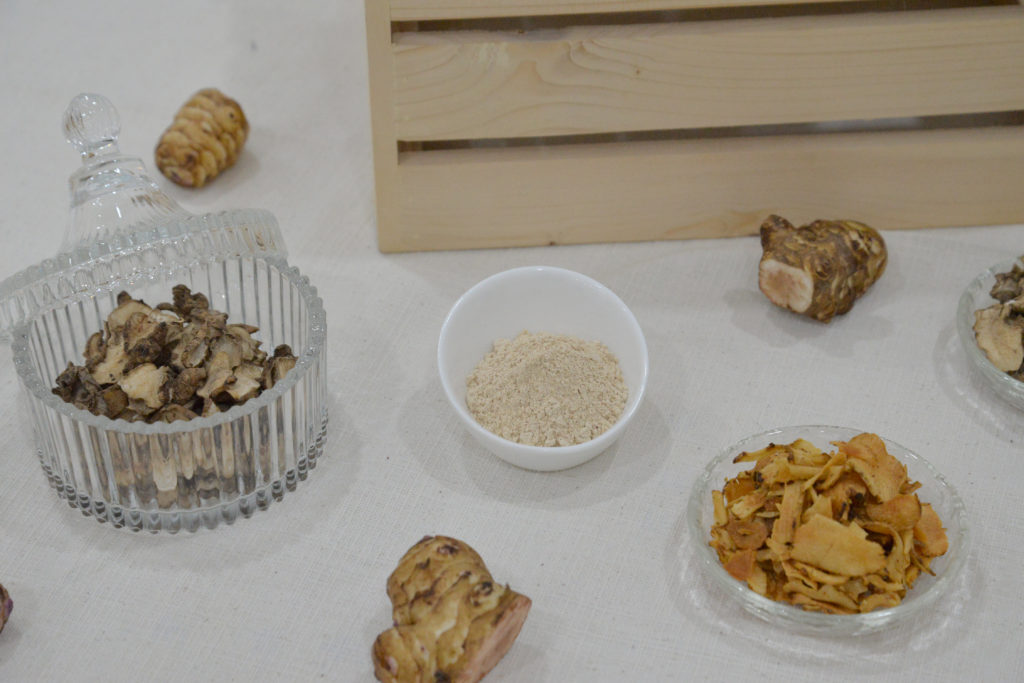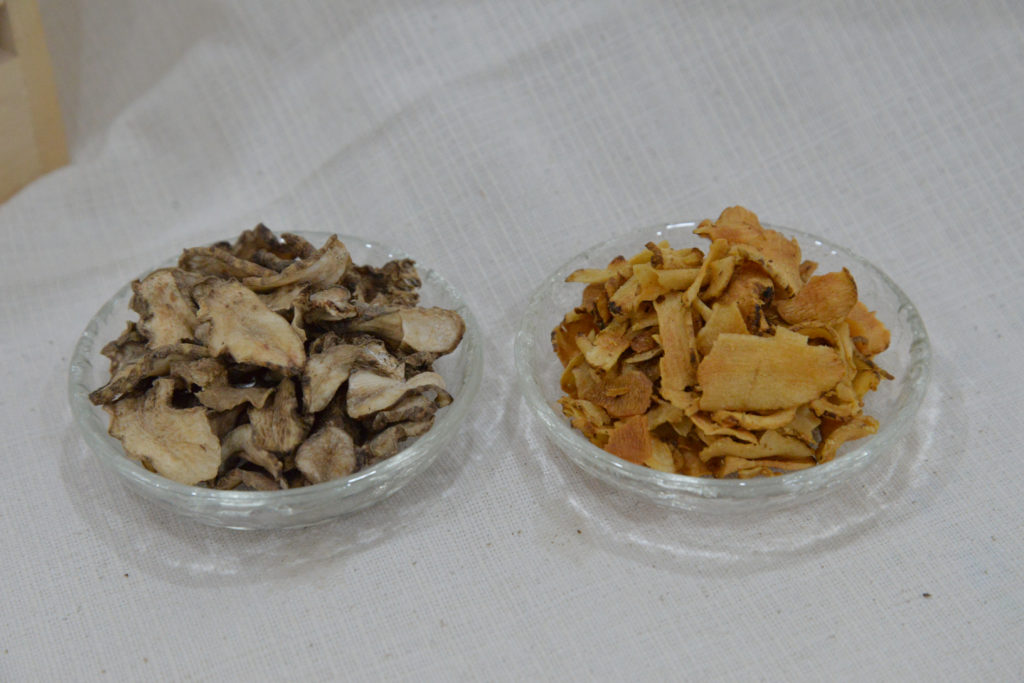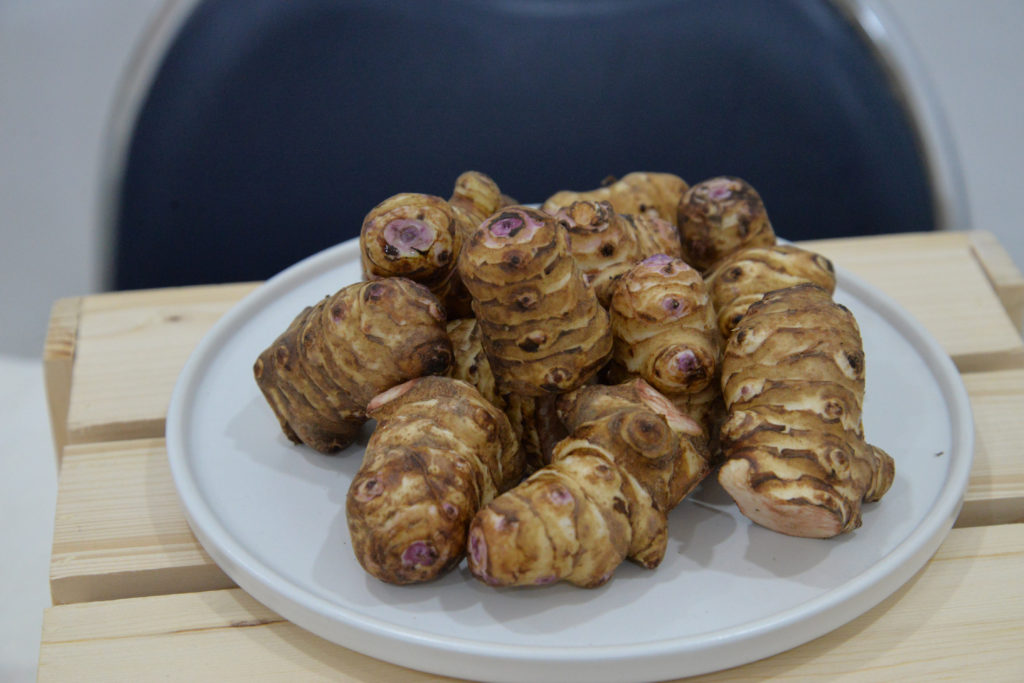
Jam Silp” Thesis Exhibition by the Department of Design and Technology, RMUTT
09/04/2024
RMUTT Thanyaburi students go for 5G Communication training at Nanjing Vocational College of Information Technology Jingshi RMUTT
10/04/2024Kaentawan Puree-Enhanced Ice Cream for those who enjoy ice cream and healthy eating is a creation by Assistant Professor Dusit Bulan, a researcher and food specialist from the Department of Food and Nutrition, Faculty of Home Economics Technology, Rajamangala University of Technology Thanyaburi (RMUTT).
Assistant Professor Dusit explains that Kaentawan (Jerusalem artichoke) is a tuberous plant native to cold regions. In Thailand, it was introduced for cultivation and development by Kasetsart University and experimented with at the Royal Project in Chiang Mai. The crop thrived even in arid, infertile soil. Subsequently, Associate Professor Dr. Sanan Jokloy from Khon Kaen University renamed it Kaentawan. Resembling ginger and galangal, its tubers have knobby skin with white or yellow flesh. It is rich in dietary fiber and contains inulin or fructooligosaccharides, complex sugars composed of fructose molecules linked to a glucose molecule, classifying it as a prebiotic. It nourishes beneficial bacteria, helps reduce blood lipids, and lowers the risk of diabetes and obesity. With a taste similar to water chestnuts and jicama, Kaentawan can be eaten raw, cooked, or incorporated into dishes like salads, stir-fries, and desserts.
Current research has explored various ways to transform Kaentawan into different products, such as pickled Kaentawan, Kaentawan kimchi, Kaentawan tea, and even Kaentawan flour for healthy snacks. Similarly, it has been integrated into ice cream to boost its nutritional value, increase dietary fiber content, and offer a healthier option for ice cream enthusiasts and health-conscious individuals.
Kaentawan Puree Ice Cream is also focusing on boosting Immunity with Prebiotics. Kaentawan puree-enhanced ice cream offers health benefits by boosting prebiotics that stimulate the immune system and inhibit the growth of pathogenic bacteria. The preparation of Kaentawan puree involves cleaning the tubers, peeling them, and cutting into 40-50 mm thick slices. These slices are soaked in a sodium chloride solution for 5 minutes, rinsed, and then blanched in boiling water for another 5 minutes. They are then blended in a food processor.
The ingredient formulation of the Kaentawan puree accounts for 20% of the mixture’s weight. The basic ice cream recipe includes 12.96% Kaentawan, 49.46% fresh milk, 18.55% whipping cream, 3.09% milk powder, 15.45% sugar, 0.19% stabilizer, and 0.31% gelatin. This formulation has been well accepted by consumers.
Precautions for consuming Kaentawan include its high fiber content, which can cause bloating and constipation if consumed excessively. Heart disease patients should avoid it due to its high potassium levels. Internationally, consumption limits for inulin and fructooligosaccharides are set at 1-4 grams per day in the U.S., and no more than 11 grams per day in Europe.
Before consumption, Kaentawan should be peeled, thoroughly washed, and soaked in a 0.5% salt solution to prevent chemical and bacterial contamination.
